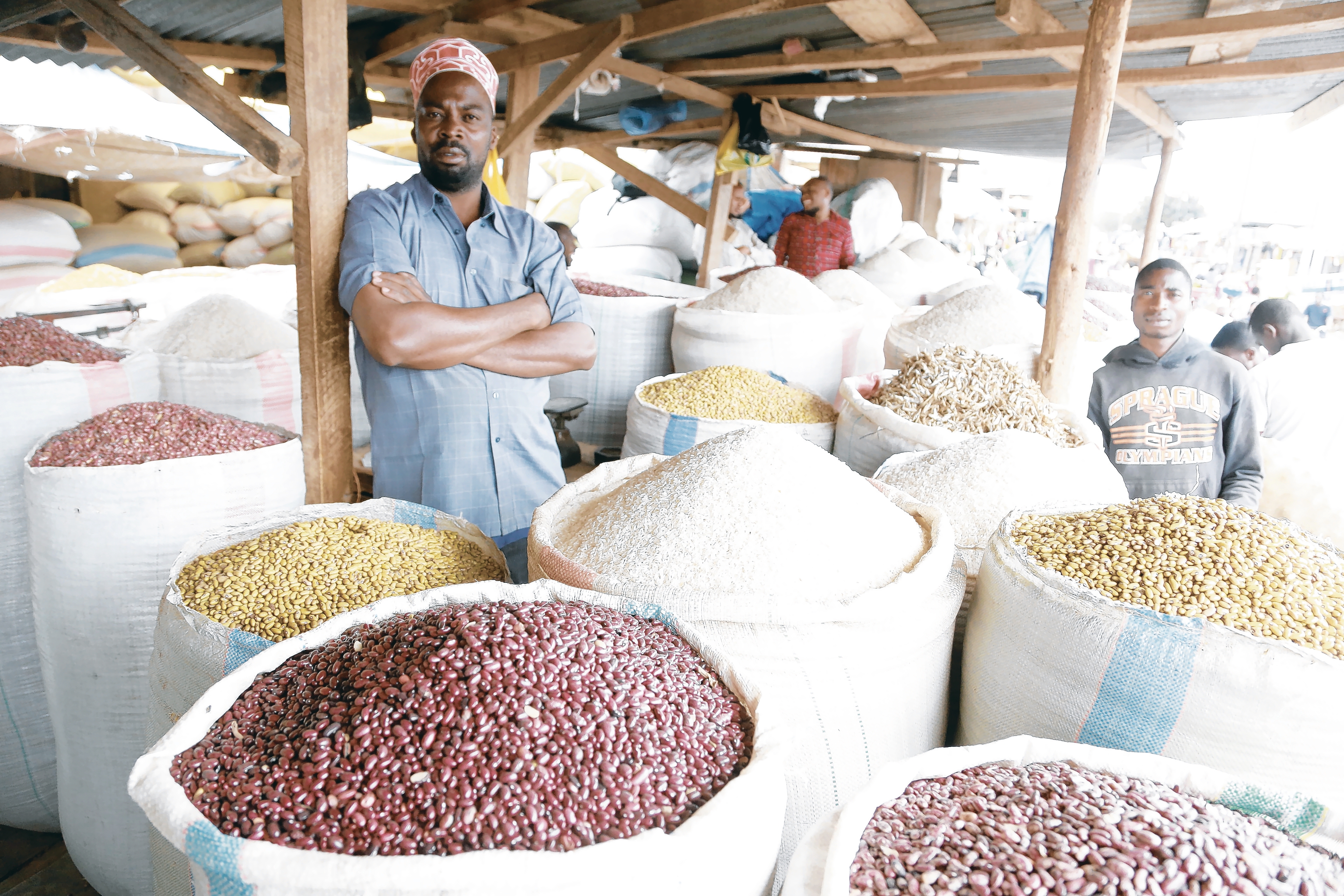Prime
Officials say no need to panic as maize, bean prices edge up

Maize, beans and other food items on sale at a market. PHOTO | FILE
What you need to know:
- Government officials have assured the public that the recent increase in maize and bean prices should not be cause for alarm
Dodoma. Government officials have moved to assure the public that the recent increase in maize and bean prices is not alarming, describing the fluctuations as normal in crop trading.
According to the Director of Crops Development at the Ministry of Agriculture, Mr Nyasebwa Chimagu, there is no concern over production levels.
“But even if there were production issues, we must ask: what are the underlying factors? Is it increased trade, higher exports, or seasonal elements like public holidays?” he said, adding that even daily changes can lead to visible price swings.
Supporting this view, the Director of Marketing and Food Security at the Ministry, Mr Gungu Mibavu, emphasised that the government conducts regular market assessments.
“The ministry issues weekly marketing bulletins showing national trends and regional price variations,” he said, urging the public to consult the ministry’s website for detailed data.
Mr Mibavu also noted that had there been any significant supply threat, the Minister for Agriculture would have addressed it publicly.
A comparison of the ministry’s marketing bulletins for the weeks of March 24–28 and March 31–April 4 shows a stable maize price of Sh900 per kilo, while beans increased slightly from Sh2,700 to Sh2,800 per kilo.
In Dar es Salaam, however, both maize and beans saw a Sh100 price decline, with maize dropping from Sh1,000 to Sh900 per kilo and beans from Sh3,400 to Sh3,300.
Still, the Deputy Minister for Industry and Trade, Mr Exaud Kigahe, linked the slight price fluctuations to weather conditions.
“Rainfall patterns have sparked concerns that the next harvest may fall short of expectations, potentially pushing up prices for maize flour,” he said.
Maize is a staple in Tanzania, and the current scarcity is being felt by many. With neighbouring countries like Kenya and Zambia also facing drought, there has been increased demand for Tanzanian maize, including purchases from the National Food Reserve Agency (NFRA).
The government is balancing between ensuring domestic supply and supporting regional food needs.
The Bank of Tanzania’s (BoT) annual report for 2023/24 shows that maize production reached 10.08 million tonnes in the 2022/23 season, surpassing the 7.1 million-tonne national requirement and leaving a surplus of 2.98 million tonnes.
Still, signs of strain are emerging. The chairman of the Maize Milling Association, Mr Oscar Munisi, confirmed a current shortage of maize flour.
“As the harvest season approaches, the flour shortage has become more noticeable, creating challenges for both consumers and suppliers,” he said.
He noted that the NFRA typically intervenes during shortages by selling maize at subsidised prices to millers, helping to stabilise the market. He also expressed hope that the situation would improve once the new harvest begins in June.
Mr Munisi revealed that prices have surged, with a kilo of maize now costing between Sh11,000 and Sh12,000 in April, up from Sh980 in March—a 22 percent increase.
Meanwhile, according to the Consolidated Zonal Economic Performance Report for the quarter ending September 2024, the NFRA held 651,403 tonnes of food stock, a sharp increase from 244,168 tonnes the previous year. During the same period, it purchased 320,792.2 tonnes of maize and released 9,951.6 tonnes to areas affected by severe rains. The Cereals and Other Produce Board (CPB) held 79,937.1 tonnes for commercial use, with maize accounting for 54.8 percent.
In a significant development, Tanzania recently hit a record maize production of 11.7 million tonnes, becoming the third-largest producer in Africa. This was announced in Dodoma by the Minister for Agriculture, Mr Hussein Bashe, who credited the milestone to improved farming practices and government support.
The government aims to raise production further to 15 million tonnes by the 2025/26 season, with a focus on increasing yields to 30 sacks per acre. Fertiliser subsidies have played a key role, with consumption rising from 360,000 tonnes to 840,000 tonnes, and plans underway to hit one million tonnes by 2025/26.
Beyond maize, efforts are also underway to boost the production of other crops such as sunflowers. The NFRA is set to be the primary buyer, ensuring market stability for farmers.
Despite a 16 percent maize price increase between June and November 2024 due to robust export demand, local prices have remained largely stable, maintaining Tanzania’s food security and enhancing its role in regional trade.





